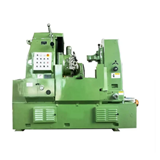Each item of PPE has specific Australian Standards that apply to the care, fitting and maintenance of these items. This information will normally be found on the items. The information in this article should be used as additional information to these standards.
Specific Protection Items
Specific protection items are those pieces of PPE which protect a specific body area. The items we will be looking at include:
- Hard hats
- Hearing protection
- Leather gloves
- Rubber gloves
- Safety Gloves
- Welding Gloves
- Safety & Protective Goggles
- Safety Eyewear & Glasses
On our MedicalSearch platform you can also find a range of Coronavirus COVID-19 Medical Supplies including Non-Contact Thermometers, Face & Surgical Masks, KN95 Face Masks, 3 Ply Face Masks and Hand Sanitisers & Soaps.
Hard Hats
Hard hats are one of the most common personal protective equipment items in use within Australian workplaces. Depending upon the type of hard hat, the expiration date will be between two and five years. If the helmet sustains a hard knock, is dropped or is left in a hot vehicle for extended periods of time, it will need to be replaced because of potential damage to the structural integrity of the hard hat. Always keep your hard hat in a cool location out of direct sunlight.
Inspections of hard hats
When visually inspecting the external shell of the hard hat you are looking for signs of:
- Cracks, dents or bulges
- Crazing
- Chalky residue
- Dullness of the surface
- Any other abnormality
Run your fingers over all surfaces, searching for weaknesses or areas of 'give'. Look at your fingers for signs of a residue. Any residue left behind or other signs of damage and the hard hat should be returned to the storeperson and a new one requisitioned.
When you inspect the webbing or suspension system, look for signs of:
- Fraying or stretch in the bands, webbing or size adjustment straps
- Broken, worn or torn straps
- Damage or stress to the harness attachment points
- Loss of pliability
- Brittleness in the strapping, webbing and closures
- Excessive sweat absorption as the acidity in the sweat can break down the harness
Run your fingers around the entire suspension or webbing system feeling for:
- Roughness or changes in the texture of the straps
- Excessive smoothness or stretch in the straps
- Join all closures and adjustment points. Do they stay in the closed position if tugged lightly?
After a physical inspection check your fingers for any signs of debris or material that has come from the webbing and suspension system.
Cleaning of hard hats
If you found no faults, your hard hat is ready to be cleaned. If you have found abnormalities, you should replace either the suspension system (if possible) or the entire hard hat.
To clean the hard hat you will need:
- Warm soapy water. Pure soap flakes is a good choice.
- Soft cloth
Rub the shell, the webbing and suspension system with the damp soft cloth until the hard hat is clean and dirt free. Allow to air dry in a cool place out of direct sunlight.
Contraindications for hard hats
Never use:
- Harsh chemicals
- Paint
- Glues unless manufacturer approved
- Solvent based adhesives
- Permanent markers
All these products can result in damage to the structural integrity of the hard hat.
A new development in hard hats can be seen at:
http://www.safetyquip.com.au/blog32/safetyquip-blog/prochoice-safety-gear-releases-new-v9-hard-hat/
Leather gloves
Inspection of leather gloves
Leather gloves should be supple, clean and odour free. Cleaning the gloves regularly is essential. Gloves should be inspected for signs of damage prior to cleaning. Damage could show through:
- Cracks in the leather
- Fraying of edges and cuffs
- Worn fingertips
- Chemical contact areas
- Holes
Once a visual inspection has been completed, run your fingers over the gloves, seeking areas of roughness, damage or weaknesses. Place the gloves on and search again for areas of weakness or excessive roughness and damage.
If damaged, the gloves should be disposed of in accordance with site and organisational requirements. These requirements could include:
- Returning to store
- Disposal in appropriate waste bins
Cleaning of leather gloves
If gloves are free of damage, the dirt should be removed. Once dirt free, the gloves can be washed.
- Dampening the gloves (don't immerse in water) with a mixture of either warm soapy water. Baby soap is the preferred cleaning agent because the additional moisturising agents assist to keep the leather supple.
- Scrub the gloves with a small, soft bristled brush such as a nail brush.
- Rinse the gloves, again being careful to avoid immersion, in fresh warm water. A 2-5 ml of white vinegar added to the water will remove any odours.
- Dry naturally on a flat surface, away from direct sunlight.
- Once dry, the gloves can be moisturised using any good quality leather care kit.
Storage of leather gloves
Keep your gloves out of direct sunlight in a cool location in an area that is vermin proof.
Contraindications for leather gloves
Leather gloves should be kept away from:
- Chemicals
- Sharp objects which can puncture
- Excessively rough or damaged materials
An interesting case of cross contamination can be read at:
http://www.cfmeunsw.asn.au/ohs/incidents/risk-of-infection-from-storing-gloves-in-hard-hats
Rubber gloves
Rubber gloves are common items of workplace personal protection equipment. Gloves used for cleaning are predominantly disposable, so we will focus on rubber gloves used when undertaking electrical work.
Storage of rubber gloves
These gloves need to be stored correctly as incorrect storage will result in weak areas or the development of minor fissures in the rubber which render the gloves ineffective. When storing rubber gloves you should:
- Avoid folding the rubber as fold lines can develop, negating the protective qualities of the rubber
- Keep clear of steam, sunlight and heat sources as heat and light can weaken the rubber
- Away from sources of electricity
- Place gloves in a storage bag and hang the bag to ensure nothing gets put on top of the gloves
- Ensure gloves are kept empty (no inner linings) when stored
Inspecting rubber gloves
Gloves should be inspected both before and after every use. Gloves should be visually inspected for damage before a tactile inspection.
Gloves should be air tested regularly to search for signs of damage. Air testing can be done by inflating the gloves then listening and feeling for deflation and leaks.
Inspections, both visual and tactile, should look for:
- Brittleness
- Inflexibility
- Changes to the feel of the rubber
- Weaknesses
- Lightness or change in thickness of the rubber
- Embedded materials
- 'Stickiness' or patchiness of rubber
These gloves will need regular testing by a method or process approved under the AS 2255-1994 and AS 255-1994/Amdt 1-1996 Insulating gloves for electrical purposes.
Cleaning of rubber gloves
Rubber gloves should be kept clean to ensure protective qualities of the rubber are not compromised. Gloves should be cleaned as follows:
- With mild soap or bleach free detergent and tepid water
- Thoroughly rinsed to remove all traces of soap or detergent residue
If rubber gloves used to insulate against electricity come into contact with:
- Oils of any kind
- Petroleum based products
- Solvents
- Heavy chemical contamination of any kind
The gloves will need to be cleaned with the appropriate manufacturer approved cleaning agent and process. If the gloves come into contact with these products you must contact the manufacturer to determine the appropriate processes and products to use.
For further information on a range of issues relating to gloves:
http://safetywiki.pppl.wikispaces.net/Gloves?responseToken=09da7c625e5c0594795ac5cf9f5c1bc93
Hearing protection
Hearing protection comes in a range of products depending upon your environment. These can include:
- Single use earplugs – one use, disposable items
- Multi-use earplugs – limited duration, personal issue earplugs
- Earplugs attached to bands – limited duration, personal issue earplugs
- Earmuffs – long term, personal issue hearing protection systems
Visual inspections of earplugs
The multi-use and banded earplugs should be used for a maximum of one month. At all times ensure the earplugs are:
- Dirt free
- Undamaged and whole
- Appropriately soft. Hardness can occur when plugs are heated. If hard, discard.
- Not malformed or deformed
If the earplug is damaged, deformed or different from the last use, discard and replace.
Cleaning of earplugs
Use only mild soap and warm water to clean after every use. Towel or air dry immediately and keep in an appropriate storage case.
Contraindications for earplugs
Always keep the earplugs free of chemicals and substances such as dirt and dust.
Earmuffs
Inspecting earmuffs
Earmuffs need to be inspected for damage to either the ear cup or cushions. If the ear cup is damaged, discard the earmuffs as they will no longer protect your hearing. Ear cushions should be inspected for:
- Tears
- Holes
- Abrasions
- Worn padding
- Mould which can develop if earmuffs are stored in damp conditions
If the ear cushions are damaged, the cushions may be replaceable, depending upon the manufacturer's instructions. Check the owner manual to determine if yours can be replaced.
Cleaning of earmuffs
Earmuffs cannot be immersed in water. Use a damp soapy cloth to wipe the cushion and cup before drying.
Storage of earmuffs
Earmuffs should be stored in a cool, dark location within a dust free case. Where possible, the storage case should be hard plastic to stop damage occurring during storage.
Further information can be found at:


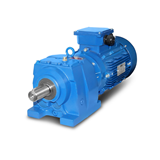
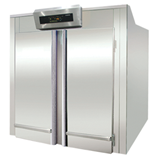
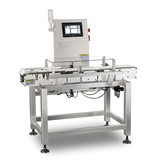
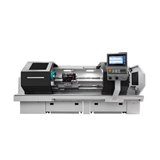
-160x160-state_article-rel-cat.png)







-160x160-state_article-rel-cat.png)
-160x160-state_article-rel-cat.png)

